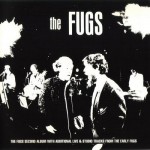“Jackson Mac Low as Reading Machine: Stanzas for Iris Lezak, Sampling, and Print Culture,” presented at High and Low, European Network for Avant-Garde and Modernist Studies, Adam Mickiewicz University, Poznan, Poland, 11 September 2010.
[From the introduction] In this paper, I propose a historical and cultural reading of postmodern practices of textual sampling and “reading through” in the poetry of Jackson Mac Low. To do so, I will position the methods and materials of his magnum opus Stanzas for Iris Lezak at the intersection of several concerns. The first is the imperative to rethink modernism and the historical avant-garde in relation to the content, forms, and media of mass culture. … More















